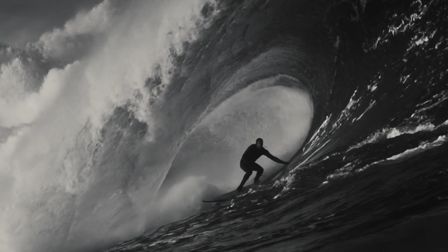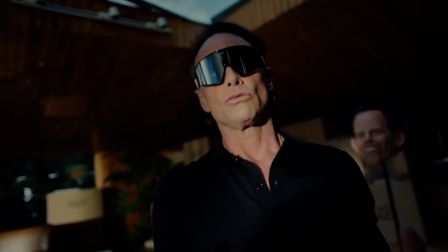Saatchi LA Talks Us Through Its ‘Impossible Quest’
We catch up with ECD Dwayne Koh to chat about the unique collaboration and innovative engagement behind their VR Prius Prime experience.
VR is getting everyone pretty hot under the collar at the moment, with consumer products like Playstation VR, Vive and Oculus certain to be under the Christmas tree of lucky tech-heads at the end of the year and ‘experiences’ popping up everywhere from the local mall to massive trade shows. However, the form is still very much in its infancy, so it’s understandable that content creators are still trying to find their feet in finding innovative and enjoyable ways to engage with audiences. A sure-fire head start is to bring in storytellers who are used to taking people through tales in pioneering ways, so it’s no surprise that for an experimental campaign for Toyota’s Prius Prime, Saatchi Los Angeles collaborated with the best in the biz.
‘The Impossible Quest’ is a VR event that incorporates users’ creations using a custom-engineered proprietary 3D design tool with a world design inspired by Syd Mead (the visual futurist on Tron and Blade Runner) and a story by Emmy-award winner Jason Zada of MediaMonks, who directed feature film ‘The Forest’ and is responsible for the pop-culture phenomenon ‘Take This Lollipop’ and ‘Elf Yourself’. Making its world debut at TechCrunch Disrupt, the event engages in two stages - kicking-off with a guided 4D design experience using a custom-built VR painting tool, dubbed the ‘Prius Prime Studio’, to create elements for the VR universe and then moving on to the user-generated creations being incorporated into the world in real-time, as the user dons the VR goggles and is dropped into a futuristic world.
We were amazing (and, frankly, slightly baffled) by the concept, so sat down with Dwayne Koh, Executive Creative Director at Saatchi & Saatchi LA, to chat about the execution, the collaboration and how the darn thing actually works!
What can people expect when taking part in ‘The Impossible Quest’?
The current VR landscape offers a static experience where the user is simply a passive participant. We wanted to push the limits of the technology, immersing the user in an interesting place and engaging them to participate and share their experience socially. Those who adventure on “The Impossible Quest” can expect to jump into a new world where they’re in the drivers’ seat.
Why VR for this project? What does the tech add to the message?
This Prius Prime is the most technically advanced Prius yet, so we wanted an experience that mirrored the ground breaking nature of the Prime. And then, more simply, we wanted consumers to experience the key benefits of the Prius Prime – the range, the 11.6-inch multimedia touchscreen. VR has the unique ability to transport us into new worlds and create environments that previously only existed in our wildest dreams, but at the same time, allow us to experience the Prius Prime in action.
How did you work with Toyota to make sure the project encompassed what they were looking for? Did they take much convincing?
In being Toyota’s close partner for decades, we have a trusted relationship which allows us to explore new territories together. We work closely, as a team, to make sure we’re always innovating and staying ahead of the curve so this project felt right for all of us, but at the same time, always staying focused on the guiding principal of highlighting the features and benefits of the vehicle in an authentic, natural way.
Explain the “Prius Prime Studio” to us? How does it differ from the VR we’ve experienced in the past?
So – “The Impossible Quest” consists of two distinct pieces – the VR painting portion and the VR ride and drive portion. Prius Prime Studio is a custom-built VR painting tool that we designed specifically for the first part of this experience. Initially, our intent was to use an off-the-shelf VR painting tool, however none of the existing tools allowed us to connect the two pieces of the experience in real-time. Our team had to problem solve for this, and the outcome was the custom-engineered VR painting tool – the Prius Prime Studio.
The project’s story is led by MediaMonks Jason Zada, who’s been behind some incredible work in the past. Do you think this technology needs a different type of storyteller? What were you looking for when working with him?
This type of experience really needs someone who can inject excitement and drama while telling the story in an amount of time that keeps consumers engaged. With Jason’s past film and digital experience, he was the perfect person to shape the story.
Why was it important to bring in talent like Syd Mead? What was it that you hoped he would bring to the project?
Syd Mead is a visual futurist – someone who’s style is instantly recognizable. We wanted someone who would lend uber-geek level credibility to the project. It was important to us not just to have someone lend their name, but someone who was willing to be hands-on. With Syd’s background as an automotive designer, his involvement was a great fit.
What’s the development for a project like this? How long were you working on it?
8 weeks from agreement on the idea to final production.
How can people experience the ‘Quest’? Is it limited to a location or is this something that Google Cardboard / Oculus Rift / Vive users can indulge in?
“The Impossible Quest” debuted at Tech Crunch Disrupt San Francisco. We’re hoping we can share it with consumers at upcoming auto shows.
How would you classify the experience? Is it filmmaking? Is it gaming? Is it something else?!
Ultimately, it’s marketing and product education – but there’s nothing fun about that – it’s like eating your vegetables. It’s the filmmaking and gaming elements that make it eating vegetables that taste like a dessert pizza!
Where can you see yourself using VR technology in the future? What did you learn from this project?
At Saatchi Los Angeles, we see the future of VR as social and participatory, and “The Impossible Quest” is a leap forward into that space. We have an entire team dedicated to VR, and that team continues to explore many uses of VR, from unique applications like this to more retail-based applications.









 Membership
Membership



